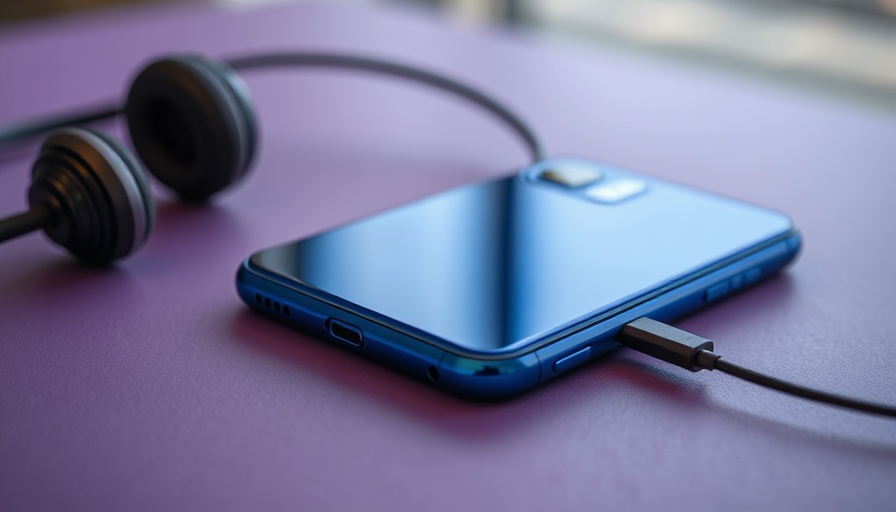
The Nostalgia of the Headphone Jack: A Brief History
The headphone jack, once a standard feature on nearly all smartphones, has seen a dramatic decline since Apple’s bold move to eliminate it from the iPhone in 2016. This decision marked a significant turning point in the mobile technology landscape, sparking debates over convenience versus functionality. Many users, especially those accustomed to the simplicity and reliability of wired connections, initially resisted this shift. The headphone jack provided versatility and eliminated concerns regarding battery life and connectivity issues, which are often exacerbated by wireless headphones. As manufacturers like Samsung and Google follow suit, opting for multiple USB-C and Bluetooth-enabled devices, a portion of the consumer base yearns for alternatives that accept traditional headphone connectors.
Why Some Users Still Prefer Wired Headphones
This resurgence of interest in phones with a headphone jack is driven by genuine user preference. For many, wired headphones remain indispensable tools for listening to music or podcasts, gaming, and taking calls:
- Sound Quality: Audiophiles often swear by the superior sound quality that wired headphones provide. They argue that with the right equipment, analog sound transmission creates a richness and depth not easily matched by compressed digital audio over Bluetooth.
- No Charging Required: While many new gadgets 2025 feature impressive Bluetooth capabilities, the battery life of these devices may diminish over time. With wired headphones, users can plug into their devices without worrying about battery failures.
- No Connection Issues: Wireless audio can be fraught with connectivity drops, plus potential interference from other wireless signals. The reliability of a pipeline connection via a headphone jack remains unmatched.
The Best Phones Still Offering Headphone Jacks
Despite the industry's trend toward a wireless future, several smartphone models continue to cater to the preferences of users who value the headphone jack. Here are some of the best options currently available:
- Motorola Moto G Stylus 2025: Priced at $400, this phone strikes a balance between affordability and functionality. Its large display and solid performance make it an attractive choice for those who prefer a stylus experience alongside audio accessibility.
- Motorola Moto G Power 2025: For $300, this model offers excellent battery life, making it ideal for long-term use without worrying about power drains during audio playback.
- Asus ROG Phone 9 and Phone 9 Pro: Retailing for about $1,000, these flagship models are designed for gamers and multimedia enthusiasts with robust performance specifications to rival the highest-tier smartphones.
- ZTE Nubia Redmagic 10 Pro: Priced at $749, its focus on gaming performance doesn’t neglect wired audio connectivity, making it a compelling choice for serious gamers.
The Future is Uncertain: Will Other Manufacturers Join the Trend?
The absence of headphone jacks in mainstream devices points to a pivotal question: Could other major manufacturers like Apple reconsider their stance? Emerging trends indicate consumer dissatisfaction, especially as the tech community witnesses a backlash against unwanted features in the compact, portable gadget market.
In particular, the rise of electric vehicles and smart technology innovations are trends that suggest a return to more universal, interoperable technology. As users continue to seek products that enhance usability rather than complicate it, there may be grounds for manufacturers to adapt. With a palpable wave of consumer feedback on online forums, we may see a shift back toward accommodating the preferences of traditionalists.
Conclusion: The Call for Diversity in Tech Design
For now, smartphone manufacturers would benefit from recognizing the broad spectrum of user preferences. The question remains: can innovation coexist with tradition? Echoing sentiments shared on tech news today, it is clear that not all users are ready to abandon their trusted cords for wireless solutions. As we look ahead, who will deliver on the promise of user-centered design as most gadgets evolve in technological capability?
Consumers can keep an eye on future technology trends, as the landscape is undoubtedly changing. Whether for nostalgia, practicality, or personal preference, the headphone jack remains relevant during these uncertain and dynamic times.
 Add Row
Add Row  Add
Add 




 Add Row
Add Row  Add
Add 

Write A Comment